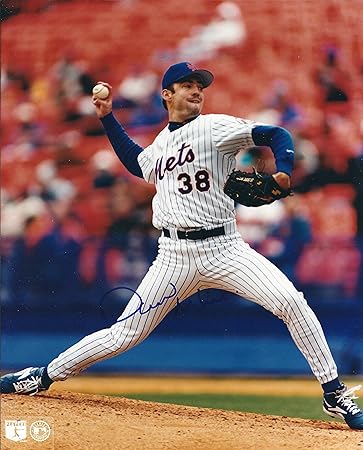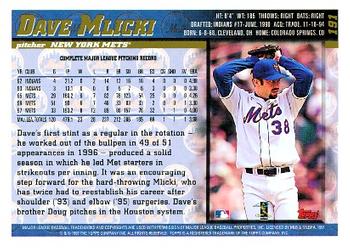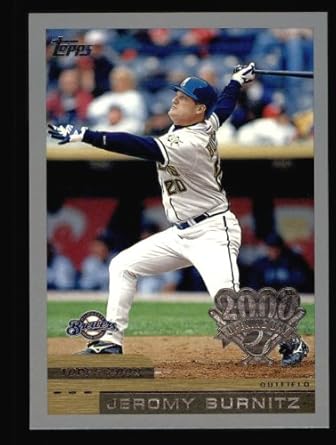Obscure players can sometimes surprise a fan with what they’re capable of delivering when you least expect it. Sure, with the game on the line you want a Tom Seaver or Doc Gooden or Jacob deGrom on the mound. When a run is needed you want a home run threat like Pete Alonso or Michael Conforto or Darryl Strawberry or Dave Kingman who can change the game with one swing of the bat. When a guy is on third base you want someone with baserunning speed like Mookie Wilson or Jose Reyes or Roger Cedeno or Amed Rosario who can score on a well placed grounder to the infield or on a sacrifice fly to the shallow outfield.
Sometimes, however, you don’t get your choice of players with one outstanding skill set. You get whomever is available at the time and you don’t even hope for a miracle. You curse your luck as a fan and take a deep breath in the wild and unlikely result that the less-than-star-quality player on whom you have relied actually came through for you. Those results seem to stick in your memory a bit more than the superstar heroics that you almost expect.
In the 1994/1995 off-season the New York Mets made a multi player trade sending Jeromy Burnitz to the Cleveland Indians in exchange for Paul Byrd, Jerry DiPoto and Dave Mlicki. It was not a great trade for the Mets as Byrd never amounted to much and DiPoto has had greater success in his post-playing career than he did in the majors. The interesting one of the trio was Mlicki, a soft-tossing but tall right handed pitcher who stood 6’4” and weighed just 185 pounds. He was not going to rack up a lot of strikeouts and his control was always mediocre at best.
His first season for the Mets they used him primarily as a starting pitcher and he responded at a professional if not eye-popping level. For the season he made 25 starts, went 9-7 with a 4.26 ERA, striking out 6.9 per 9 IP and walking 3. As a fourth or fifth starter he was credible.
The following season the Mets tried Mlicki out of the pen. It was an odd choice since he’d been better than average as a starter. Normally relievers are brought in to shut down threats or hold leads. Mlicki was a long man doing middle relief, finishing his 1996 season with 51 games, only two of which were as a starter. You’d think the team could be criticized for this move but Mlicki did well, finishing with a 3.30 ERA and increasing his strikeout rate while maintaining his number of free passes.
On the flip side, Burnitz went to town, but not in Cleveland. No, between 1995 and 1996 he was pretty much a bottom feeder with limited power and a replacement level batting average. Despite his limited production, in 1997 he was handed a starting role in Milwaukee and he started to demonstrate why so many were high on him for his potential. That year at age 28 he hit .281 with 27 HRs and 85 RBIs. He actually improved on those numbers for the next four years which inspired the Mets to reacquire him where he, naturally, dropped off considerably. He floated around between the Dodgers, Cubs, Rockies and Pirates for the remainder of his career with only one good year in the altitude-enhanced environment of Coors Field.
Given these developments, it was something of a surprise to see the Mets return Mlicki to the rotation in 1997, but times were tough, the team was bad and the new interleague play was forcing the club to use all hands on deck. On June 16th the Mets traveled across town to play a visiting game against the World Champion New York Yankees in the House That Ruth Built. Although the team did finish in 3rd place with a winning record, Mlicki’s reward to return to the rotation was “meh”. He finished 32 starts with a losing record of 8-12, a 4.00 ERA with his strikeouts down a bit and his walks up a bit. However, with Bobby Jones and Rick Reed not scheduled to go that first-ever Met/Yankee regular season game, the ball went to Mlicki and everyone figured the game was a giveaway loss to the defending champs.
Much to everyone’s surprise, Dave Mlicki truly shined. He threw a nine-hit complete game shutout, winning 6-0 against three-time All Star (and cheating) lefty, Andy Pettitte. No one expected that Mlicki would measure up, pitch-for-pitch. No one figured the Mets’ anemic offense would do much against Pettitte. However, the game shines as one of those classic examples of someone you never expected to do much in the game of baseball for one shining day taking the spotlight away from the World Champions.
Who are some of your little-known players who at least once made the Mets shine?





3 comments:
Terry Leach came cheap, having been released by the Braves, but after relieving only in 1982, he was asked to start the last game of the season due to another’s injury. Five inning no decision? Nope. How about a 10 inning, one hit shutout.
And in the Mets’ hangover season of 1987, he went an incredible 11-1, while Jesse Orosco and Randy Myers combined to go 6-15, causing the Mets to finish 3 games out.
I remember the Leach game because he matched John Denny inning for inning. I believe the Mets managed one run on two hits in that game.
I would throw the name Esix Snead into the mix. In one of his few opportunities, Snead tripled to tie a game in the ninth inning, and made his one major league home run a game-winning walk-off in extra innings.
Bob W
Hello everyone, Are you into trading or just wish to give it a try, please becareful on the platform you choose to invest on and the manager you choose to manage your account because that’s where failure starts from be wise. After reading so much comment i had to give trading tips a try, I have to come to the conclusion that binary options pays massively but the masses has refused to show us the right way to earn That’s why I have to give trading tips the accolades because they have been so helpful to traders . For a free masterclass strategy kindly contact (paytondyian699@gmail.com) for a free masterclass strategy. He'll give you a free tutors on how you can earn and recover your losses in trading for free..
Post a Comment